Captain Cook: British Museum shows artefacts as part of ‘permanent British occupation’ in Australia
Captain Cook’s history has been completely rewritten after a new museum display has shown rare artefacts being renamed in response to the Black Lives Matter movement.
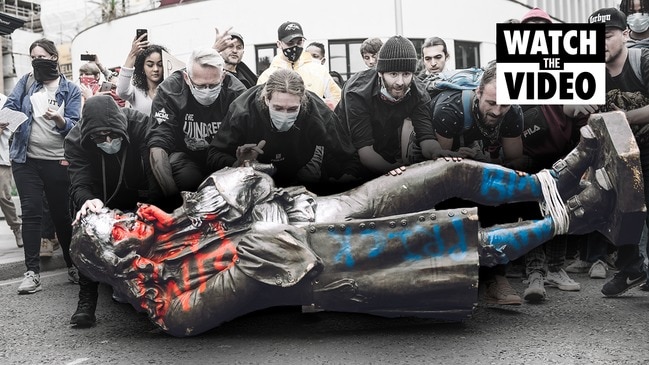
National
Don't miss out on the headlines from National. Followed categories will be added to My News.
Exclusive: The British Museum has been accused of rewriting history and hypocrisy after it relabelled Aboriginal artefacts collected by Captain Cook as being part of the “permanent British occupation” of Australia.
The relabelling of the artefacts is a response by the museum to the Black Lives Matter protests, linking Captain Cook’s charting of the east coast of Australia to the suffering of Aboriginal people following the arrival of the First Fleet 18 years later.
“James Cook sailed up the east coast in 1770, permanent British occupation began in 1788 with a ‘First Fleet’ of ships carrying convicts to establish a penal colony at present day Sydney,” a sign next to a Gweagal shield said.
“Some Aboriginal people in central Australia remained out of contact with Europeans until the 1980s,” another label states.

“The Eora people of the Sydney region suffered the first brunt of British colonisation from 1788.
“Despite loss of population due to disease and frontier violence as well as displacement, Aboriginal people continue to live in the Sydney region maintaining strong bonds with their traditional lands and culture.”
The British Museum would not officially answer questions about why the labels for the items had been changed but staff in the Enlightenment room, where the Indigenous items, were kept said The Black Lives Matter protests had “inspired” the change.
“They were inspired by the Black Lives Matter movement to finally address it,” a staff member said.

Another staff member said the signs were “explaining the history of the museum and how things got here”.
Despite the changes to the signs, the museum has refused to repatriate the items to Australia as requested by Indigenous Australian man Rodney Kelly, who says the Gweagal shield belonged to his ancestors.
Institute of Public Affairs Foundations of Western Civilisation Program director Dr Bella d’Abrera said the museum was reinventing history by conflating talented navigator Captain Cook with the suffering of the Aboriginal people.
“The British Museum is guilty of promoting the false narrative that Captain James Cook invaded and occupied Australia,” she said.
“Attributing genocide to the son of a Scottish farmer is both historically inaccurate and morally wrong … Captain Cook did not invade Australia.
“This is sheer hypocrisy. On the one hand they imply that the shield was stolen from the indigenous population, but on the other, they are not returning it to the descendants of its original owners.”

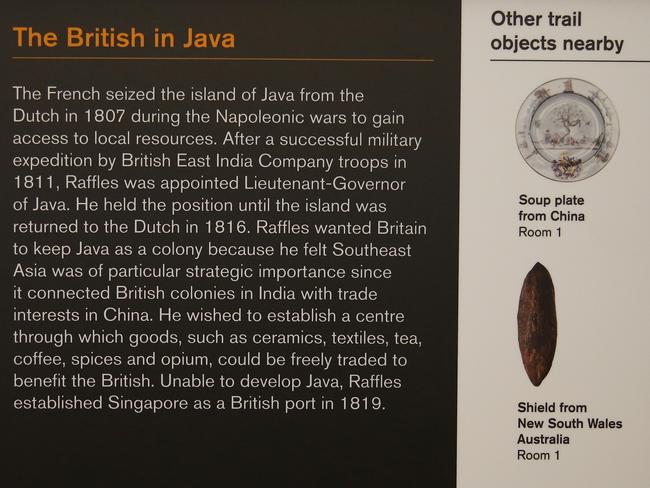
History Council of NSW president Dr Stephen Gapps also said the museum should return the items if that is what indigenous people wanted.
“I personally think that (relabelling) is a way of getting around the fact they still have those artifacts in their collections and are not willing to give a lot of those back,” he said.
“Ideally they wouldn’t have an object label on the shield and the spears and other objects, they would begin a process of repatriation.”
Exhibitions of Indigenous Australian artwork at the museum have also been given similar signs acknowledging their origins.
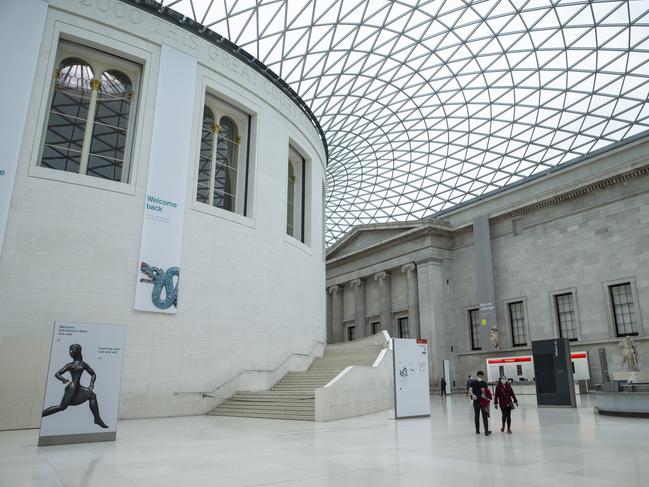
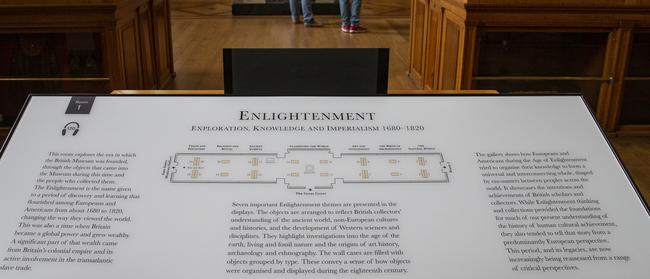
A statue of Cook located in The Mall near Buckingham Palace was defaced during the London Black Lives Matter protests, two statues of him were defaced in Sydney during protests in June, and there has been an online petition to have a statue of him removed in Cairns.
Australian National University history professor Ann McGrath said the myth of Captain Cook needed to be separated from the facts.
“I think that Cook the man is a different thing from Cook the myth and what he came to symbolise,” she said.
“It is logical that Aboriginal people see him as the beginning of their troubles and the loss of everything that they had — and in a way we have to separate that from the biography of the actual man.”
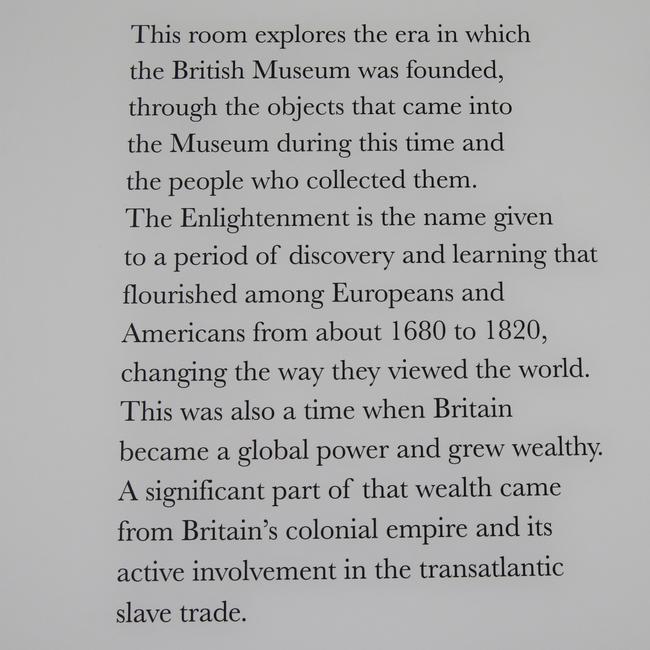
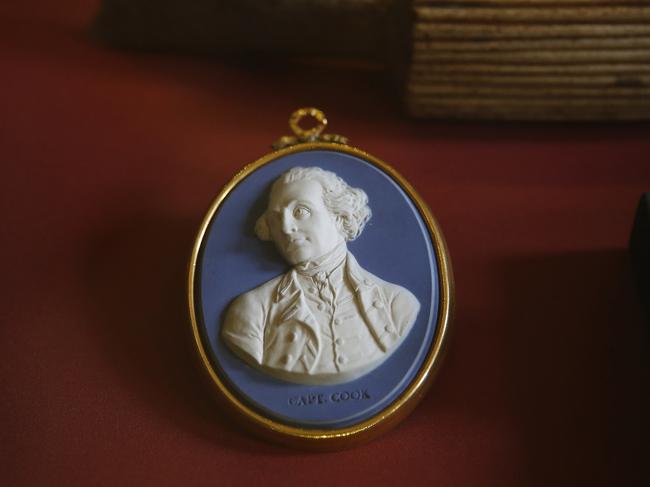

The official reason for Cook’s voyage to the Pacific was to observe the 1769 transit of Venus in Tahiti while the unofficial purpose discovered in a note from the King once the Endeavour set sail was to look for evidence of an ‘unknown southern land’ — a prize in a great race place between Britain and France at the end of the 18th Century.
His instructions from the King were “if he found a “continent or land of great extent” he should seek “with the consent of the natives to take possession of convenient situations in the country”.
Cook named the new land known as New South Wales and claimed it for Britain before sailing north towards Queensland.

The British Museum have also taken a bust of Sir Hans Sloane, whose 71,000 piece collection of historical artefacts in 1753 was the foundation of the museum, off its pedestal.
His bust is now housed in the Enlightenment room in a glass case, alongside details of how he made his wealth from the slave trade.
Sloane, a doctor who was a contemporary of Sir Isaac Newton, married Elizabeth Rose, an heiress whose family had slave plantations in Jamaica.
The museum in Great Russell Street, central London, reopened last week for the first time since coronavirus lockdowns in the UK.
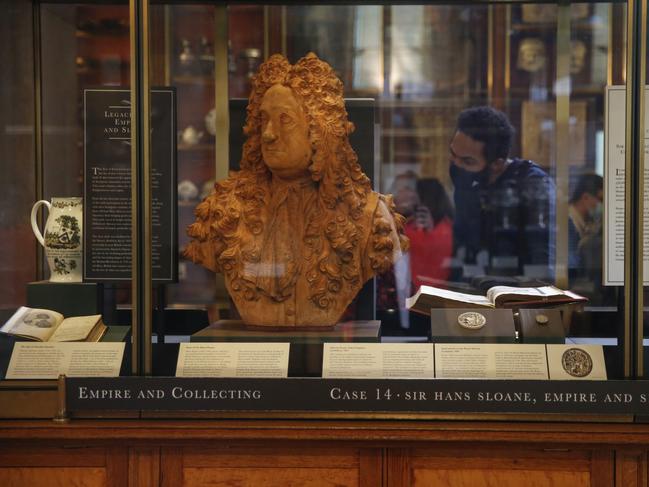
Only parts of the museum were opened, with visitors wearing masks, but the new signs were prominently displayed.
Signs in the Sir Hans Sloane display included an explanation of the new set up.
“The Museum is developing plans for new displays and programs to address questions around collecting, empire and the transatlantic slave trade,” a note read.
“This work will evolve over time and we will continue to engage in these crucial debates and discussions.”

The British Museum has also been at the centre of controversy over its acquisition of the Elgin Marbles, statues from the top of the Parthenon in Athens, Greece.

Lord Elgin claimed he had a deal to take the marbles to Britain in the 19th century but Greece has demanded their return for decades, most recently as part of a Brexit deal with the European Union.
The UK refused to return the marbles to Greece.
The British Museum did not respond to written questions.
MORE NEWS
Secret ways Facebook is breaching your privacy
Which famous author wrote Chitty Chitty Bang Bang?
Violet Crumble’s new makeover as Polly Waffle suffers setback
New twist to hit Aussie song ‘From Little Things Big Things grow’
Originally published as Captain Cook: British Museum shows artefacts as part of ‘permanent British occupation’ in Australia
